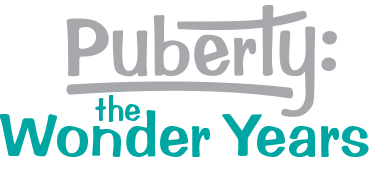Does this sound like anyone you work with?
“We’re still using the same puberty video that we’ve used for 20 years!”
Quote from too many teachers to count
“I’m a new teacher and I don’t have any idea what I’m supposed to teach my 5th graders about puberty. I found some transparency masters in the closet. I guess I’ll use those.”
Frustrated first-year teachers across the U.S.
Time to Assess & Update Your Program
Public schools have a regular curriculum review schedule for reviewing and updating all academic subjects. The curriculum director is typically responsible for this task. Sex education and puberty education might be left out of the curriculum review cycle unless someone is charged with ensuring it is included in the schedule. Like all academic subjects taught in school, it’s important to evaluate, review, and update your puberty education program. So, let’s dive into assessing puberty education curriculum.
Evaluate program effectiveness:
- Pre- and post-tests that measure changes in student knowledge, attitudes, and behavioral intentions can help assess whether program goals are being met.
- Surveys of teachers, students, and parents/caregivers can reveal the strengths and gaps in programming. They can also help you build support for your programming.
- Puberty: The Wonder Years offers optional pre-and post-tests to measure student learning. A free teacher survey is also available.
Review the current curriculum and implementation plan:
- Assess what is being taught and what curriculum and resources are being used to teach puberty education.
- Assess the strengths and weaknesses of your previous implementation of the lessons. For example, ask these questions:
- Are all students receiving the same instruction consistently?
- Have all teachers completed the professional learning needed to teach puberty education comfortably and competently?
- Are class sizes conducive to optimal learning?
- Are parents and caregivers being notified about the puberty education program and offered the opportunity to preview the lessons and ask questions?
- What modifications would improve program outcomes?
- Puberty: The Wonder Years provides teacher-friendly lesson plans to ensure consistent delivery of instruction and self-paced Online Training Courses to build teacher confidence. Family previews and engagement resources are included with Puberty: The Wonder Years
Update the puberty education program:
- Based on evaluation results, review of the program, and feedback from teachers, students, and parents/caregivers, what updates will be beneficial?
- What outdated information needs to be updated?
- How can the curriculum, instructional methods, and implementation plan be more inclusive of all students?
As the needs of students change over time, any program can become outdated and irrelevant if schools aren’t intentional. For example, educators have become more aware of the need to make sure that all curriculum is available to and representative of all students. Reviewing the puberty education program through the lens of inclusion can reveal areas for improvement.
Criteria to Consider When Assessing Puberty Education Curriculum
- State laws: Laws related to teaching sex education, including puberty education, vary from state to state. It is very important to know what is required and what is forbidden in the state where the instruction will take place. The health and sex education consultant at the state’s department of education will be an important source for that information and how it applies to schools.
- State Health Education Standards: Sex education is addressed within the Health Education Standards for each state, if there are any. Become familiar with the standards that guide puberty education for each grade level. Puberty: The Wonder Years provides state-specific sex education information for many states, including how the standards for grades 4, 5, and 6 are met by teaching Puberty: The Wonder Years.
- National Health Education Standards: These provide the foundation for state standards in most states. National Health Education Standards were updated in 2023 by the National Consensus for School Health Education (free) and in 2024 by SHAPE America (fee-based). It will take some time for states to update their standards.
- National Sex Education Standards: These were updated in 2020 to provide the foundation for sex education across the nation. While they are not mandatory, they offer guidance about which objectives to teach at K-12 grade levels. Visit this webpage to see the National Sex Education Standards and how Puberty: The Wonder Years is aligned to address them in grades 4, 5, and 6.
- Student Needs: Use local student data to determine what students need to learn. Student surveys such as the National YRBSS, the state YRBS, and local health department data can help guide the topics taught at each grade. This YRBS Data Summary & Trends Report: 2011-2021 provides a summary of a decade of data. The YRBS Explorer provides a user-friendly tool for reviewing data.
- Community Support: Most parents want more sex education taught, not less. To accurately assess parental support for what and when to teach various topics in sex education, conduct a survey of parents/caregivers in the local school. Here is a sample parent survey that can be modified. Be sure to only survey parents, not community members in general, to get an accurate result.
Best Practice Matters
Remember when puberty education consisted of corralling the girls in one room and the boys in another? Remember having the school nurse show a filmstrip/movie/DVD about menstruation to the girls while the boys played basketball in the gym? Remember sending the students home to get answers to their questions? Remember the days when a one-hour session in fifth grade was considered enough to hold students off until they took health class in ninth grade? Well, those days are gone.
It wasn’t enough then and it isn’t enough now. Students need puberty education that includes information and skill practice to be safe and healthy. These resources can help provide guidance about best practices for teaching sex education and puberty education:
- Characteristics of Effective Curriculum-Based Programs, Dr. Douglas Kirby
- What Works in Schools: Sexual Health Education, CDC
- Puberty Curriculum Scorecard 2024, Wendy L. Sellers, RN, MA, CSE
- Curriculum Selection Checklist, Puberty: The Wonder Years
We Can Help
Assessing your current puberty education program and making improvements can feel like a daunting task. But you’re not alone. We can help. Please contact us to learn more about how Puberty: The Wonder Years can make your puberty education program as relevant and effective as possible.



